The final step of preparation is making sure that it’s one line. Sometimes I skip this or intentionally use multiple ribbons, but given the theme of this piece I thought it most appropriate to adhere to the tradition of the single unbroken line.
I start in a corner and on its own layer, draw along the ribbon to see just how much of of it is already in the first ribbon:
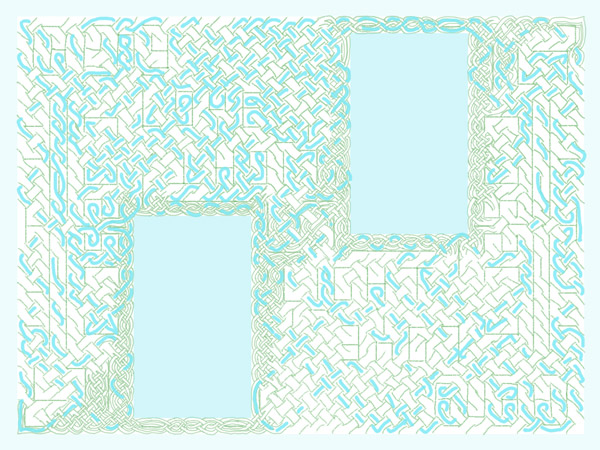
There’s still a pretty substantial part open and the knot is rotationally symmetrical at this point so I consider two different colored ribbons instead of one. After all, that’s still in keeping with the theme of “Love.” So I start at the next corner to see what falls into the second ribbon:
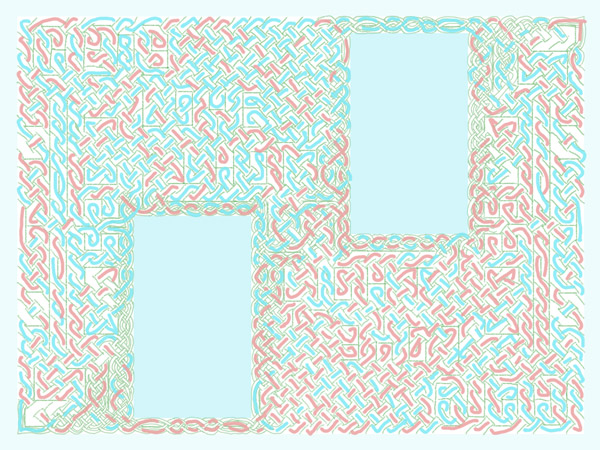
The areas on the ribbons that are still white are their own closed ribbon. I briefly considered keeping the four circles on the left and right edges; If I did that I would probably make them gold circlets.
However, the other two areas need to be joined up to the main lines. And I think the two lines are too spread out and will work against rather than with each other if I make them distinct colors, as I usually prefer to do with each ribbon, so I need to join them.
I do this by adding new barriers to break the lines and reflow them into each other:
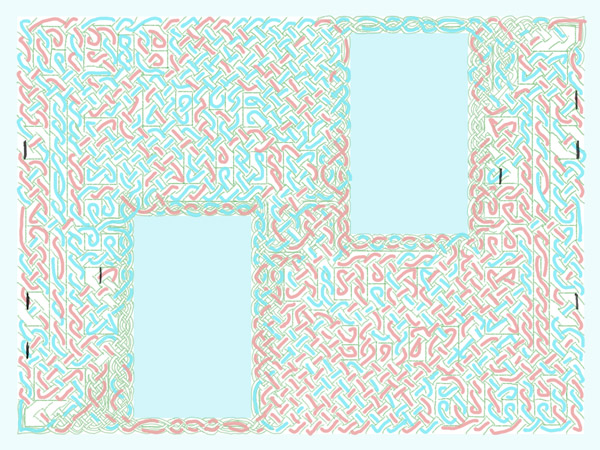
and then redraw the base guides:
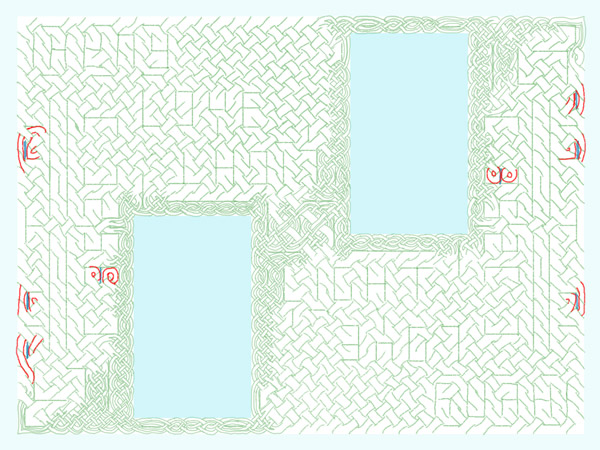
And integrate them into the base:
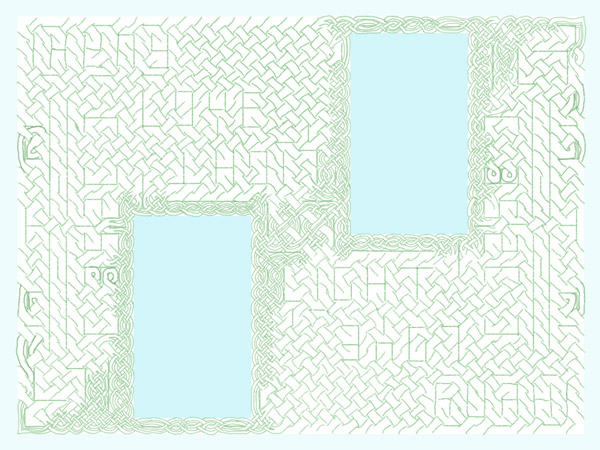
Every change to the barriers has the potential to completely change the ribbons by cutting off a new part. I’ve made several changes so I start over drawing along the ribbons:
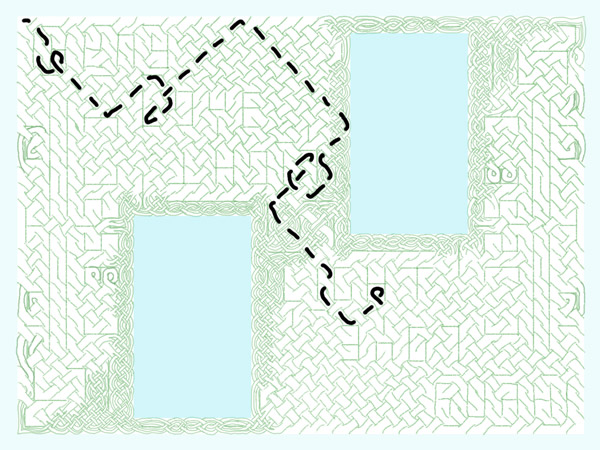
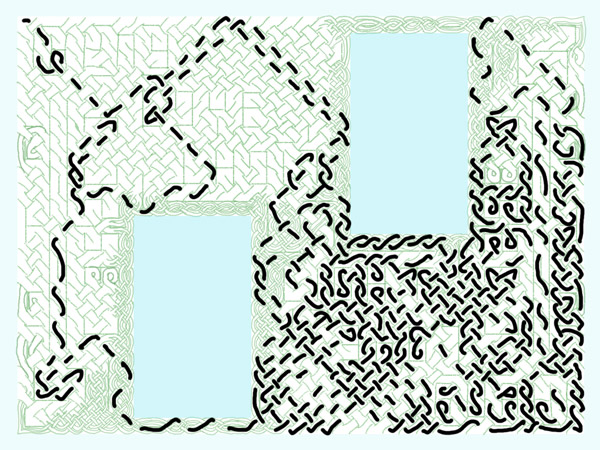
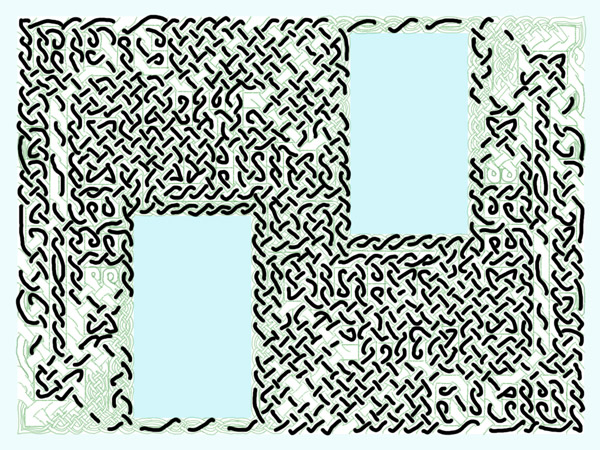
And there you see it. In the process of adding those other six lines, I’ve cut off a new part of the knot. That means a new round of changes to the base. For the second round, I usually will do one new barrier at a time. I pick a spot where the two ribbons cross and add my new barrier in:
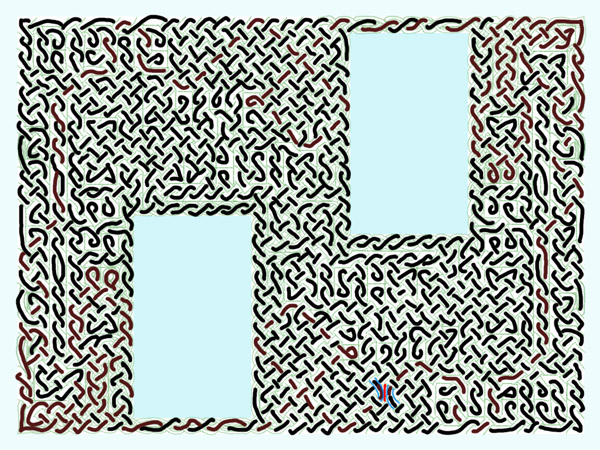
Luckily in this case, a single new barrier is all that was needed. You can see the “added” ribbon in dark red. Sometimes this step can entail several new barriers if there are a lot of thin spots where the different ribbons cross. This piece being mostly a solid knot gave me lots of possible places.
This barrier breaks the symmetry. Adding the same barrier in its symmetrically appropriate place creates two ribbons again I found so I have opted to leave this slight imperfection in the symmetry in service to the greater perfection of the unbroken line.
So I integrate that new barrier into the base:
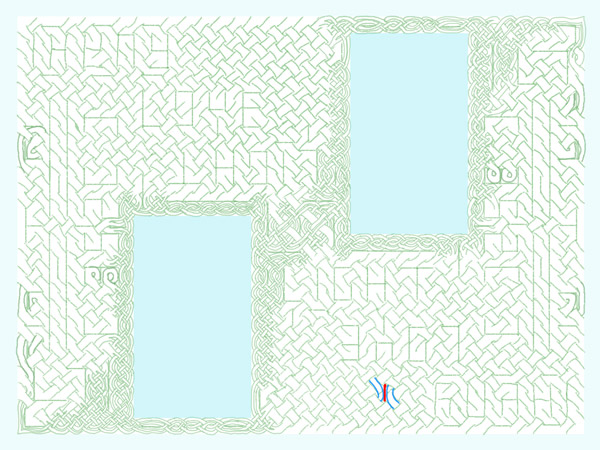
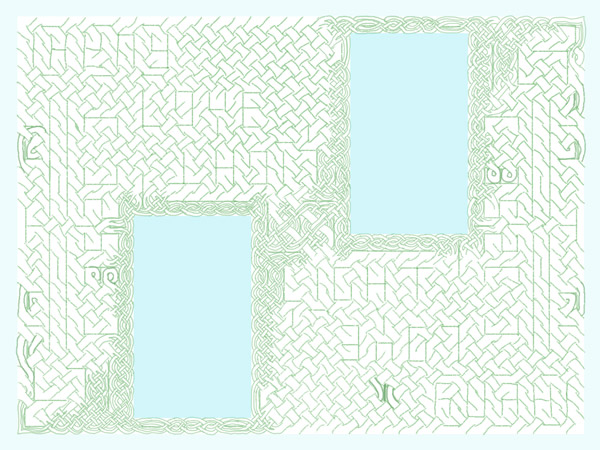
This base is now ready to guide the final knots.
Leave a Reply